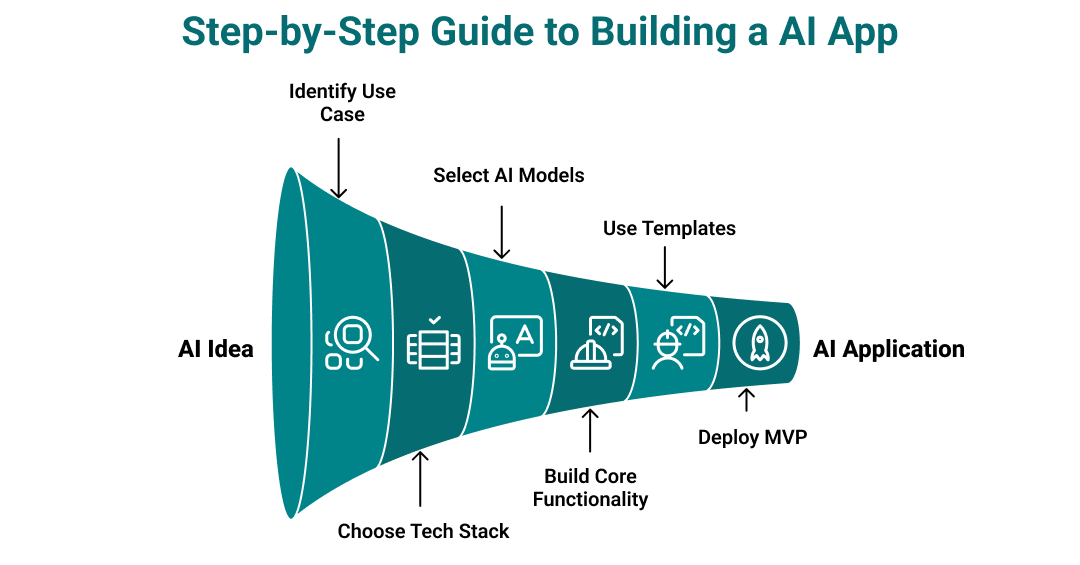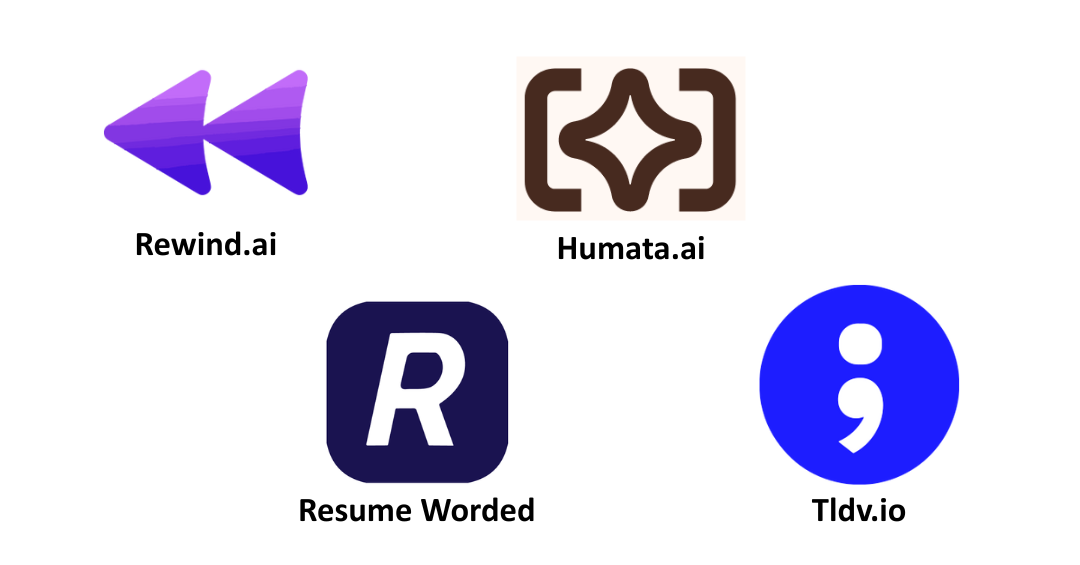
A Developer’s Guide to Prototyping Smart Solutions Fast
In a world where speed and innovation drive competitive advantage, the ability to rapidly validate an idea with real users is more valuable than ever. This is especially true in AI development, where pre-trained models, APIs, and frameworks let you build AI app solutions faster than traditional software products. More AI development companies are now focusing on quick MVP development builds to help startups validate ideas faster. If you're developing an MVP, speed and functionality should take priority over perfection. Building an MVP allows you to test assumptions early and iterate based on real user behavior.
This blog will serve as a comprehensive, step-by-step guide to building a Minimum Viable Product (MVP) AI application from concept to deployment in under 48 hours, a fast-track approach rooted in minimum viable product software development principles, practical MVP app development techniques, and fast AI prototype execution.
Why Build an MVP AI App in 48 Hours?
Why rush? Isn't AI development complex?
Here’s the reality:
- AI development is becoming modular and accessible.
- You don’t need to train models; you just need to orchestrate them.
- Investors, customers, and partners care more about functional validation than polished design.
- Speed lets you fail fast, learn faster, and iterate better.
This is why many AI development companies now emphasize rapid prototyping and lean MVP development as part of their core service offerings. Developing an MVP with AI capabilities allows startups to demonstrate value quickly and gather early feedback. These practices align with the agile mindset of minimum viable product software development, where early testing leads to faster refinement. Building an MVP also helps reduce risk while achieving proof of concept. More importantly, rapid AI MVP app development helps bring products to market faster with real-time feedback loops.
Whether you're looking to test a new SaaS concept, build AI app functionality into an existing service, or launch a lean AI prototype, this development approach can give you a strong head start.
Step 1: Identify the Right AI Use Case
A 48-hour AI MVP succeeds or fails on problem selection. You need a problem that:
- Is narrow (solves one thing well)
- Can be tackled using existing AI tools or APIs
- Has real-world relevance for validation
These criteria are critical for effective MVP product development, especially under time constraints. Being strategic while building an MVP ensures that development efforts are focused on solving tangible problems that users care about.
Ideal use cases for rapid AI MVPs:
Category | Example MVP |
NLP | Resume screening tool, PDF summarizer, email rewriter |
Vision | Product image classifier, receipt scanner |
Audio | Meeting transcriber, voice command parser |
Workflow | An AI agent for form filling or ticket routing |
Chat | Domain-specific chatbot (e.g., tax QundefinedA, HR bot) |
Step 2: Choose a Fast undefined Scalable Tech Stack
When building under pressure, your tech stack must prioritize speed, integration, and low setup cost.
Suggested Tech Stack:
| Layer | Tool | Why It Works |
| Frontend | Next.js / React / Streamlit | Rapid UI dev with SSR undefined routing |
| Backend | FastAPI / Flask (Python) | Quick setup, async I/O for calling AI APIs |
| AI Models | OpenAI, Cohere, HuggingFace, Replicate | Plug-and-play intelligence |
| Database | Firebase, Supabase, SQLite | Simple integration and minimal config |
| Deployment | Vercel, Render, Replit, Railway | One-click deploy and free tiers |
| Auth (if needed) | Clerk, Firebase Auth | Out-of-the-box user management |
Step 3: Select Pre-Trained AI Models and Services
You’re building an AI MVP; avoid model training. Use existing APIs or hosted models. These are ideal for quick and effective AI development without the overhead of building from scratch. This approach streamlines MVP development by reducing complexity.
If your goal is to build AI app functionality fast, these pre-trained services save time and deliver real-world results:
NLP (Text Tasks):
- OpenAI GPT-4 / GPT-3.5: Chat, summarization, parsing
- Cohere: Classifiers, embeddings, sentiment analysis
- Claude: Contextual QundefinedA or creative writing
Vision:
- Google Cloud Vision: OCR, label detection
- Replicate: Deploy Stable Diffusion, CLIP, ControlNet
Audio:
- Whisper (OpenAI): Speech-to-text
- AssemblyAI / Deepgram: Real-time transcription
Agents undefined Tools:
- LangChain: Tool integration, memory handling
- LlamaIndex: RAG for document querying
undefineda class="code-link" href="https://www.seaflux.tech/blogs/explore-litellm-effortless-ai-projects" target="_blank"undefinedLiteLLMundefined/aundefined: Easily switch between LLMs with one API
Tip: Use services like Hugging Face Spaces, Replicate, or Together.ai for instant model deployment.
Step 4: Build the Core Functionality (Working Demo undefined Perfect Code)
This is where you spend the most time. Start with the undefineda class="code-link" href="https://www.seaflux.tech/blogs/essential-programming-languages-ai-development" target="_blank"undefinedbackend AI logicundefined/aundefined and then connect it to a basic UI. The key to building an MVP in such a tight timeframe is to prioritize working features over polished design. This fast, iterative approach is the essence of lean AI MVP app development, getting a working version into users’ hands as quickly as possible.
Suggested Development Flow:
- Input: Text field, file upload, audio recording
- Processing: Call your AI model/API with the data
- Output: Show summarized text, classified label, generated image, etc.
Example: Resume Ranking Tool MVP
from fastapi import FastAPI, UploadFile
import openai
from some_parser import extract_text # Assumes you have a text extractor
app = FastAPI()
@app.post("/rank-resumes/")
async def rank_resumes(file: UploadFile):
content = await file.read()
parsed_text = extract_text(content)
prompt = f"Rank this resume for a Data Scientist role:\n\n{parsed_text}"
response = openai.ChatCompletion.create(
model="gpt-4",
messages=[{"role": "user", "content": prompt}]
)
return {"rank_score": response['choices'][0]['message']['content']}
Then use React + Tailwind CSS to build a simple file uploader UI and connect it to this API.
Tip: Stub out the frontend and backend structure first, then fill in the logic.
Step 5: Use Templates, Boilerplates undefined Low-Code Hacks
You're on the clock. Save time by using starter kits or low-code platforms.
Resources:
- Streamlit: Fast dashboards and AI demos (Python-only)
- Appsmith / Retool: Internal tool UIs in minutes
- Tailwind UI Kits: Prebuilt design systems
- Next.js AI Starter Templates: OpenAI starter kit by Vercel
- Open Source Repos: Look for “awesome-ai-apps” on GitHub
Tip: Search GitHub with keywords like “chatbot gpt nextjs” or “pdf summarizer fastapi” to find base projects.
Step 6: Deploy the MVP undefined Make It Public
For APIs:
- Render: Deploy Python/Node APIs with autoscaling
- Railway / Replit: Fastest setup for full-stack apps
For Frontends:
- Vercel: Best with Next.js / React apps
- Streamlit Cloud: Share Python dashboards
For Feedback:
- Add shareable links: Make it easy for testers to try
- Include a bug form or feedback link
- Track metrics with PostHog or LogSnag
Bonus: Add a basic landing page using Framer, Carrd, or Typedream to explain what your MVP does.
48-Hour Time Breakdown (Sample Plan)
| Time | Task |
| 0–2 hrs | Ideate, research similar apps, and define user flow |
| 2–6 hrs | Set up backend, test AI API integration |
| 6–12 hrs | Build frontend layout, connect with backend |
| 12–18 hrs | Test AI flow with real inputs |
| 18–30 hrs | Handle edge cases, optimize prompts, and basic auth (if needed) |
| 30–42 hrs | UI polish, responsiveness, bug fixes |
| 42–48 hrs | Deploy, create a landing page, and collect user feedback |
Testing undefined Validation
A working MVP means:
- AI outputs are functional (not perfect, but usable)
- There’s a clear value proposition
- Users can try it without hand-holding
- You’ve received real feedback (even from 3–5 people)
Use tools like:
- Hotjar / PostHog – for usage analytics
- Google Forms – for post-demo surveys
- Tally.so / Notion – to collect sign-ups or interest
Real-World Examples That Started As MVPs
- Rewind.ai: Originally a Mac OS app that records screen + voice and lets you ask it questions
undefineda class="code-link" href="https://www.seaflux.tech/blogs/humata-ai-document-analysis-summarizer-pdf-processing" target="_blank"undefinedHumata.aiundefined/aundefined: Began as a simple PDF QundefinedA interface- Resume Worded: An AI resume grader with a simple score system
- Tldv.io: Transcribe Zoom meetings using Whisper
All of these started with minimal, focused MVPs, and now they’re growing startups.
Final Thoughts
Building an AI MVP in 48 hours isn’t about cutting corners. It’s about leveraging modern tools, rapid prototyping principles, and pre-trained intelligence to ship fast and learn even faster. The key to successful MVP development is having a clear goal, lean tech, and fast feedback loops.
You don’t need a team of engineers or months of AI development, just a strong idea, a tight scope, and the willingness to experiment.
Need Help Building Your AI MVP?
Seaflux is a trusted undefineda class="code-link" href="https://www.seaflux.tech/custom-software-development" target="_blank"undefinedcustom software development companyundefined/aundefined offering tailored AI development services to help you prototype, build, and scale smart applications quickly.
From AI chatbots to recommendation systems and inventory tools, we deliver undefineda class="code-link" href="https://www.seaflux.tech/ai-machine-learning-development-services" target="_blank"undefinedcustom AI solutionsundefined/aundefined designed for your specific goals, not generic platforms.
As a reliable undefineda class="code-link" href="https://www.seaflux.tech/ai-machine-learning-development-services" target="_blank"undefinedAI solutions providerundefined/aundefined, we support startups and enterprises across industries like fintech, healthcare, and logistics.
undefineda class="code-link" href="https://www.seaflux.tech/contactus" target="_blank"undefinedContact usundefined/aundefined or undefineda class="code-link" href="https://calendly.com/seaflux/meeting?month=2023-12" target="_blank"undefinedschedule a meetingundefined/aundefined to bring your AI idea to life.

Dhrumi Pandya
Marketing Executive








